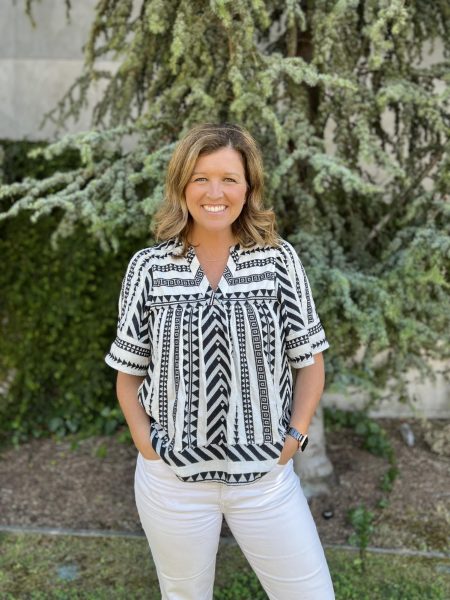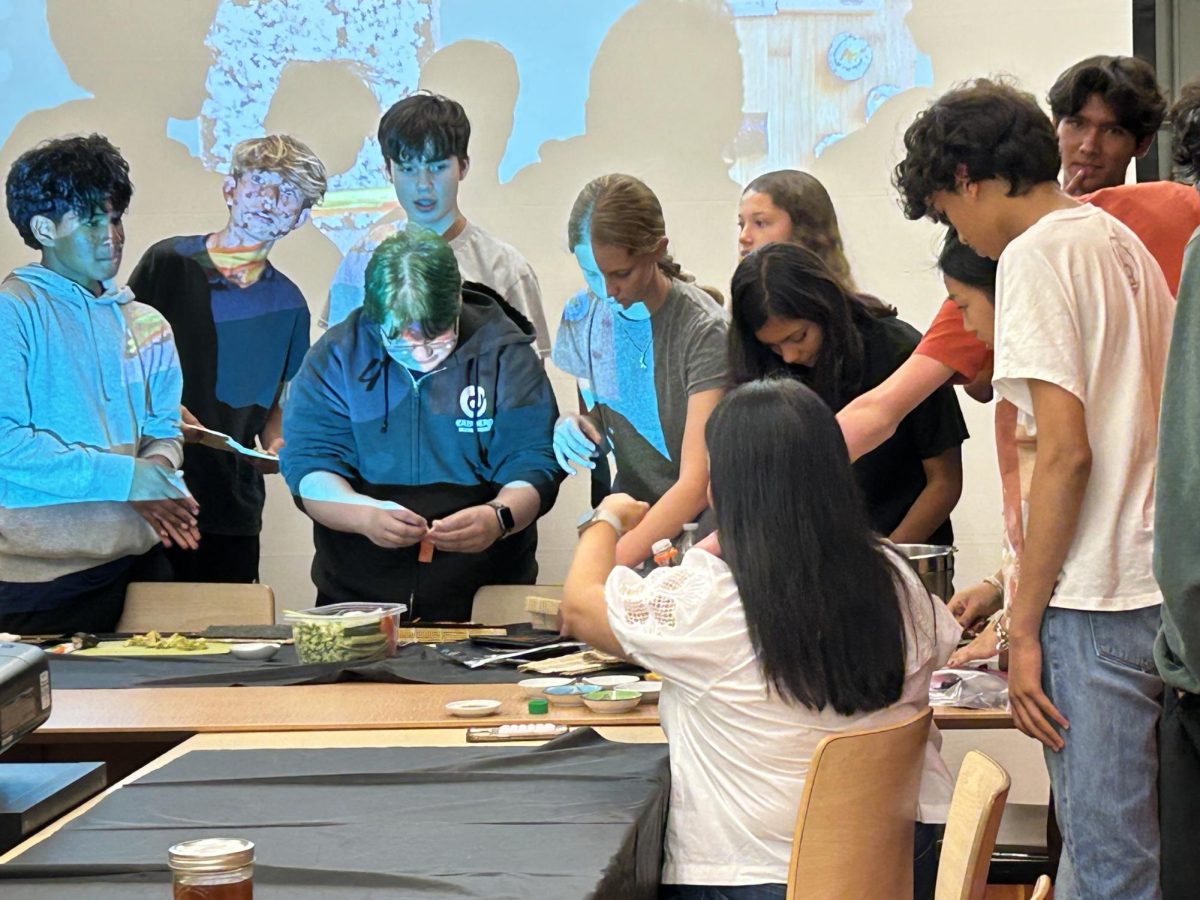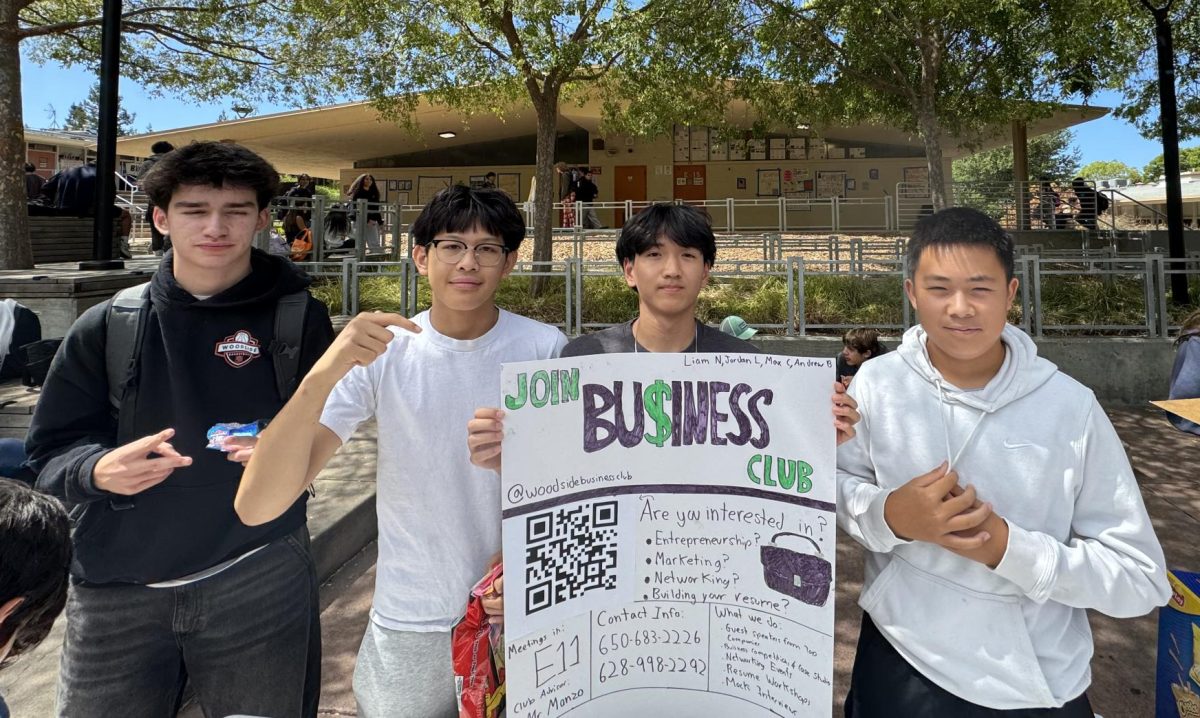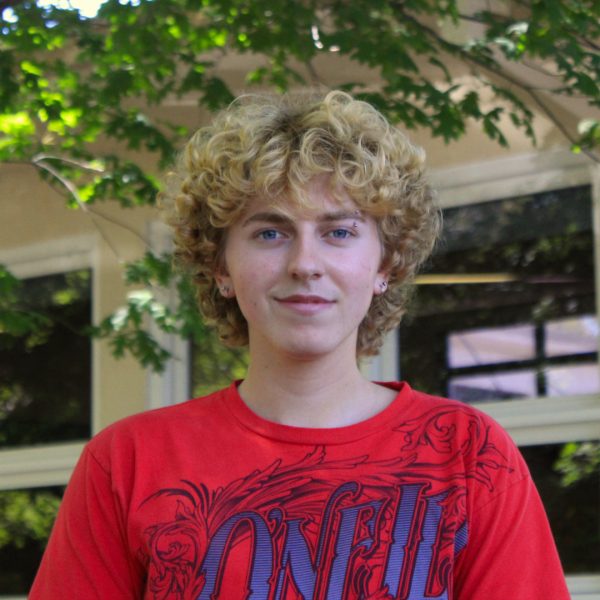
As the Woodside High School community settles into a new school year, a familiar face is finding her place as she returns to campus as the new Administrative Vice Principal (AVP).
Amy Hanson was a Spanish teacher for nearly 18 years. She was also the Avid Coordinator, the head of the World Languages Department and then moved to Menlo Atherton High School for two school years as an AVP. Wendy Porter was the previous AVP, who recently retired after last year.
“[The previous AVP, Porter] had been here for a long time,” Hanson said. “She announced that she was retiring, so they posted the job for the public, so anyone who had an administrative credential and wanted to apply to this job was able to apply. And I applied just like everybody else.”
The position as an AVP consists of helping the principal manage the daily operations of the school. They work together to oversee staff management, student discipline, curriculum support and school safety.
“The reason I applied was because I loved teaching at Woodside, and I really grew to love the community here,” Hanson said. “I liked Menlo Atherton, but it didn’t feel like home in the way that Woodside does.”
Hanson started at Woodside as a Spanish teacher and eventually found this path to further pursue her passion.
“I’ve always been someone who likes helping people,” Hanson said. “When I went to college, I really didn’t know what I wanted to do. I knew that I wanted to help people, but I didn’t know if it would be kids or if it would be adults.”
Through this knowledge and these opportunities, Hanson was able to establish a passion. She found and established this passion at college.
“I was taking a Spanish class and I ended up doing some tutoring with kids in Spanish,” Hanson said. “[During that] I was like, Oh, wow. This is really fun. So then that kind of snowballed into, what could I do with Spanish, and then I became a Spanish teacher.”
Through the experiences she gained, she was able to fuel her future career. As Hanson explained, her ambition and desire to uplift others pushed her to take on even more roles and leadership positions, which have brought her to where she is today.
“I noticed myself as someone who likes to stay busy, try new things,” Hanson said. “I knew I never wanted to leave a school, but I [wanted to think of something] that changes my role a little bit. So that’s when I started looking into applying to be the AVID coordinator, and then I [looked into] the world language chair, and I was taking on more leadership roles.”
To become an AVP, you must earn a bachelor’s degree in an education-related field, get your teaching credentials, in some cases teach for 3-5 years, and experience a leadership role, then you can get your AVP credential.
“Our school district offered a scholarship program for people who applied,” Hanson said. “Those who were interested and getting their administrative credential paid for. I applied to that, and I was accepted. So then I was going to work in our district as a vice principal, and that’s how that whole thing happened.”
This new role comes new experiences within the school and school district.
“I’m excited about getting to know kids in a different way, and also getting to know the community more,” Hanson said. “I think that this role makes it easier because there’s more interaction with community members who are coming in, and being at events in the evening.”
While it can be different and a change of scenery, a new place in this community can bring questions about what is to come.
“People know me as a teacher,” Hanson said. “So, [I have to] transition my mindset to acknowledge I’m in a different role. [This causes me to wonder things like] how do I interact with students differently because of this different role? How do I interact with staff differently because of that? So my challenge might just be the unknowns. The unknowns are challenges because you don’t know what’s gonna happen.”
A common AVP’s responsibilities consist of student discipline, staff supervision, school operations & safety, attendance and enrollment, support for the principal, parent/community relations, and extra‐curricular/student activities oversight.
“I really want students to know that the AVP office doesn’t have to be a place where you’re in trouble,” Hanson said. “There are so many other things that an AVP office is for; it could be a place that is a resource. So if you want to play a sport or get involved in a club, and you’re just not sure who to talk to, your AVP is a great person [for that].”
Hanson hopes to bring a new sense of community among students. As she explains, she hopes that AVPs aren’t seen as your enemy, but as a friend around campus.
“I’m really here to serve students, staff, and families,” Hanson said. “I have an open-door policy, and I hope that people come by and say hi, or if you have a question, or just don’t know where to start on something like and if I don’t know, I’ll try to find the person or a resource that can help you. I really believe that we are all a team, and I want to continue to build a great community here.”





